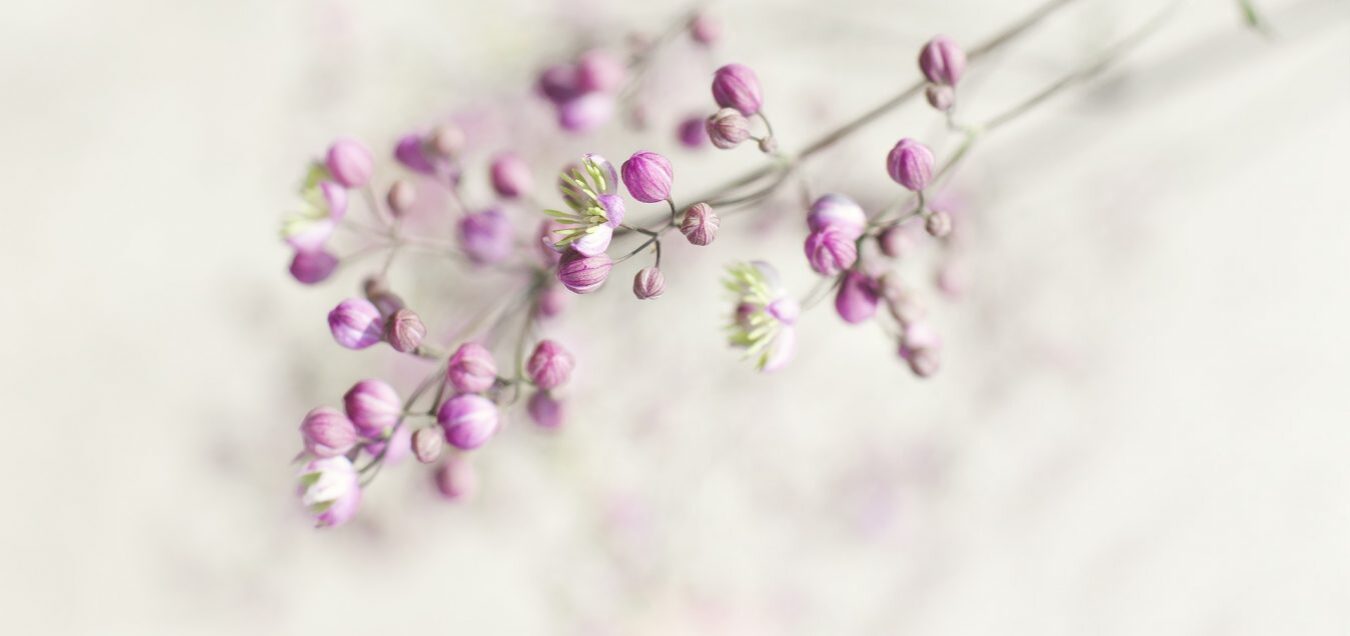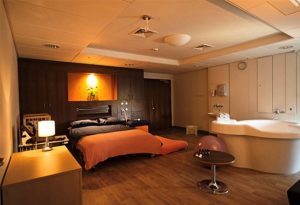The room is beautiful. Soft hues of yellow shine light like prisms of sunlight. The bed is big and inviting the type you want to fall into, its softness enveloping you like a warm embrace.
The walls whisper words of hope, dreams and inspiration, encouraging those whose eyes meet them to believe that they are strong and powerful. The air is filled with the smell of vanilla, lavender and floral tones. Soft music eases the ears, delicate sounds that calm the heart and the mind.
The bathroom gives promise of calm and relaxation, smooth, polished surfaces and water that falls like the sweetest rain. In the corner stands a pool, softly picking up the dancing lights that flicker across its warm, rippling surface. Everything quietly whispers you are ‘welcome here’, ‘you are safe’, ‘you matter’.
Across the country there are many rooms like this, they are in birthing centres and midwifery-led units. They enable women to birth their babies in an environment that is calm, safe, inviting and homely. They support the natural process of birth, encouraging the hormones needed to help empower women in the belief and ability of their bodies to give the gift of life. The rooms are spacious and comfortable, where birthing pools are available and birthing partners can stay to support the new family. Often women get one-to-one care with a midwife and there are often provisions for reflexology and other holistic treatments.
This however is often in contrast to the bright, clinical, rooms that make up many of our maternity units. Sterile rooms that are often small and cramped, full of medical equipment. Access to birthing pools is often limited. Lighting is harsh, the smell of disinfectant heavy and the sounds are often that of a busy maternity unit. The staff are struggling to manage the needs of so many. Families and staff alike struggle to maintain a calm, homely environment. The need for monitoring means that mobility can be limited and instead women can often be more likely to be confined to their hospital bed. In such conditions hormones are stunted, fear is increased and birth is heavy with interventions. It is also rare that partners can stay by a woman’s side after birth to provide much-needed support.
What about the hardworking staff? They are able to support women better in units that facilitate calm. Having equipment that enables monitoring while still being mobile, and being able to create a positive birthing environment will mean being able to support better birth experiences and fewer interventions. That of course also makes for a much nicer place to work too.
Of course given the choice anyone would choose the option of giving birth in a beautiful room, in a birthing centre that enables calm and supports the birthing process. Yet the reality is that for the majority of women, this cannot be the case, why? Simply, many women do not meet the needed criteria to use a birthing centre. This can be due to health issues, concerns/complications with the woman or her baby, previous difficult experiences or maybe the loss of a baby. It can also be that locality is an issue with a woman being too far from a birthing unit to attend.
In a nearby local area, the figures speak for themselves. In a year there are about 18,000 births. Yet only about 2,000 of those took place in the birthing centre. While in many units they are seeking to reduce this it seems that for most women their birth will take place in a hospital maternity unit.
This being the case why is it that we are providing such different environments for women in which to give birth?
Of course, we want as many women as possible to have positive birth experiences. We also want to make sure that women are helped as much as possible to work with their bodies and believe in themselves to birth their babies. Yet sadly for some this will be difficult. For some even from the start of pregnancy, there are difficulties, for others health issues mean that extra support is needed in birth of a medical nature, that only a hospital can provide. Other women may require a planned c-section or may need monitoring after a previous difficult birth and for others who may have previously lost babies having medical assistance near at hand gives needed peace and reassurance. Birth is unpredictable, complications can arise and there will always be some women who need to birth in a hospital with medical care.
So is it fair that because of this they lose out on the wonderful experience that a birth centre may provide? If a woman needs to be cared for in a hospital does it mean that she cannot also have a room that is calm and inviting, that means comfort and reassurance? Can she not also have access to soft lighting, soothing music and the presence of her partner for support?
We could argue that for the many women who are birthing in hospital, they equally need these things, if not more! When faced with a medical condition, when struggling with a mental health condition, if a pregnancy has been hard, or concerns for the welfare of her baby are questioned, don’t these women and their partners need even more to feel safe, comfortable and in an environment that encourages calm and peace? What about those who have had a previous difficult experience or sadly have lost a baby? Why should they have to trade the safety of a hospital for the comforts that a birthing unit may offer?
What about our postnatal wards? Again they are often cramped. In my local unit, dark blue infection control curtains screen women off from each other and darken the bays. Why are our postnatal wards often so clinical, bare and devoid of colour or warmth? For women who have had a difficult birth or a c-section, mobility can be an issue. Having the ability to have a partner stay with them for both practical and emotional support can be invaluable. Yet most units send partners home leaving women to manage by themselves. No wonder emotional well-being is impacted.
For many women, their first experience of being in a hospital will be to birth their baby. Their birth experience will have a profound effect on them as a person but also on how they parent, bond and build relationships with their baby. It also impacts all the other people that make up their family. We have a responsibility to help provide an environment that protects them emotionally, just as much as it protects them medically.
Recently after the Better Birth report there have been a lot of conversations around improving birth, and helping women to birth more in birthing centres and at home. This of course is right and we do need to be helping more women to birth their babies without interventions. But what about those for whom this isn’t possible? Do we just leave them behind? No, because ultimately every woman deserves a beautiful place to birth, to have the choices that make her feel safe, be that soft music or rock music. Maybe she will want to dance as she labours or lie curled in a ball in the dark. Whatever it may be we should try to provide it, no matter where she births, how she births or the circumstances of her birth.
So while we look to build more birthing centres let’s not forget our hospital maternity units too. It doesn’t take much to make a place welcoming. Warm colours on walls, stickers that make rooms cheerful, chairs that turn into beds for partners and providing ways to soften lighting and play choices of music. It sometimes just needs a little imagination. But for the women that birth there and their partners and also the staff that work in them, having maternity units that shout ‘you are welcome’, that provide a home away from home, that enable calm and peacefulness are good for everyone.
If you have a maternity unit that is trying to provide a lovely environment for their families please get in touch.

